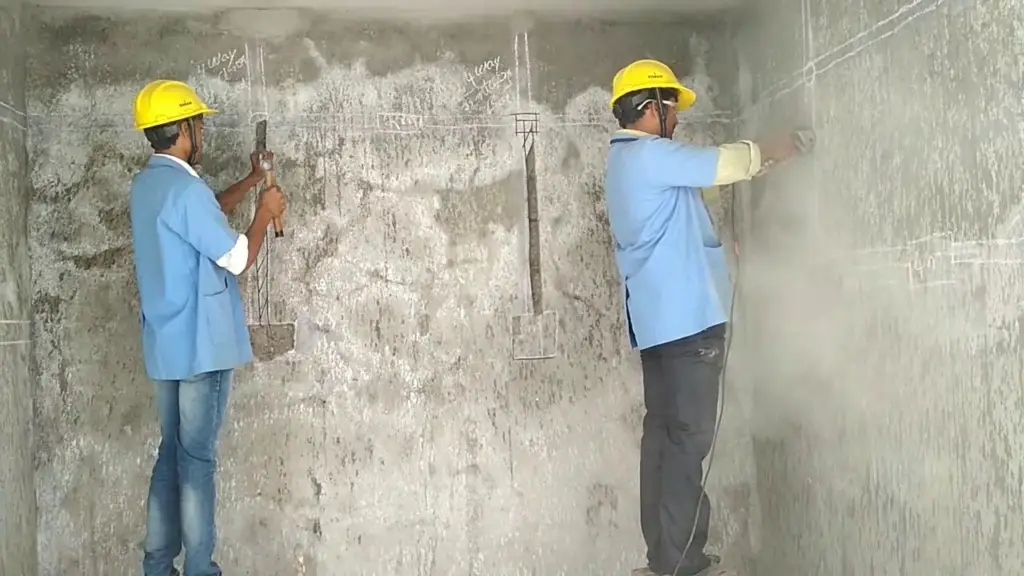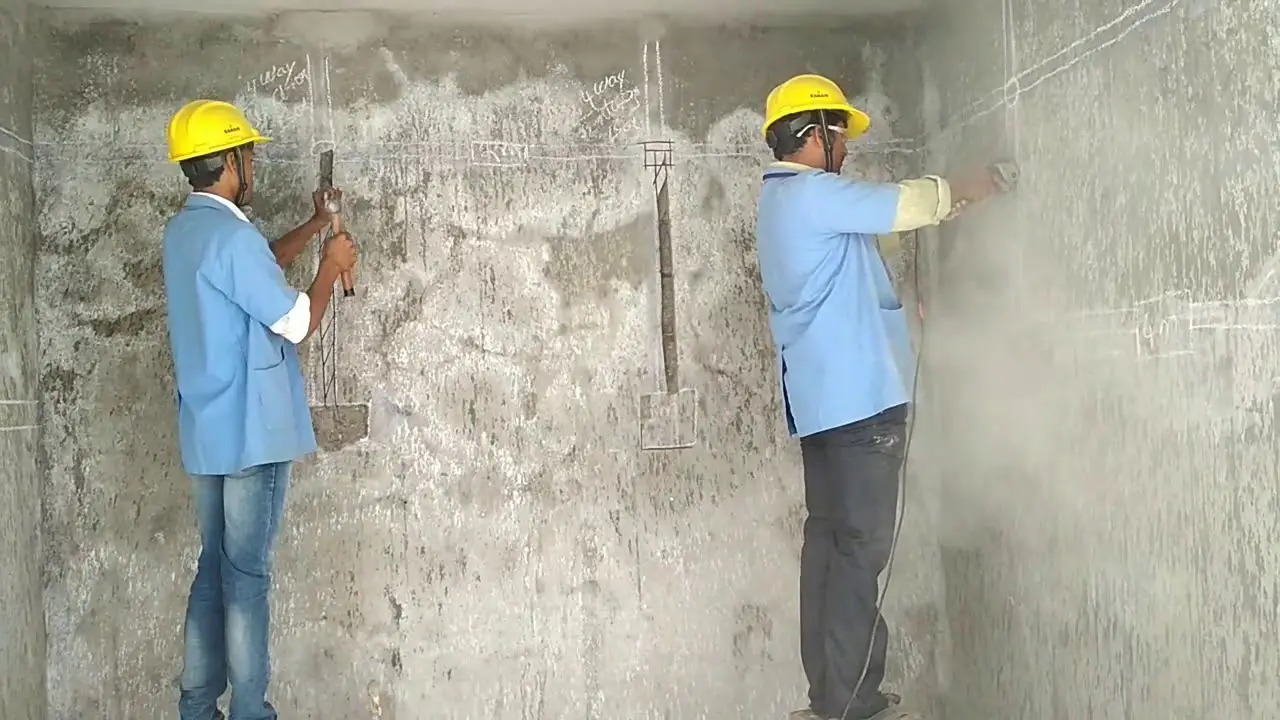Chipping is a construction process used to break down or remove hard, dense materials such as concrete, stone, and brick. This process is often used in construction and civil engineering projects to prepare surfaces for further work or to remove old, damaged surfaces.
The typical application of chipping in construction is to prepare a layer of concrete to receive second layer of concrete. So, it’s a joint preparation technique that is used widely in construction. Similarly; you might have to chip concrete surface before fixing tiles or marble. In pile foundation, we use chipping to remove the top head of pile upto the pile cutting level or pile cut off level.

Applications of Chipping in Construction
- Demolition: Chipping is used in demolition projects to break down and remove concrete structures, walls, and floors.
- Surface Preparation: Chipping is used to remove old, damaged concrete or asphalt surfaces in preparation for repaving or resurfacing projects.
- Excavation: Chipping is used to break down rocks and other hard materials in excavation projects, making it easier to remove them from the site.
- Reinforcement: Chipping is used to create grooves or channels in concrete surfaces for reinforcement, making the concrete stronger and more durable.
Benefits of Chipping in Construction
- Efficient: Chipping is a fast and efficient way to break down and remove hard materials in construction projects.
- Cost-effective: Chipping is a cost-effective method of removing hard materials, as it requires fewer man-hours than traditional methods such as hand digging or manual demolition.
- Versatile: Chipping can be used on a variety of materials and surfaces, making it a versatile tool in construction projects.
- Safe: Chipping is a relatively safe method of removing hard materials, as it can be performed using specialized equipment that minimizes the risk of injury.
Steps to Chipping
- Planning: The first step in the chipping process is to plan the project, including determining the materials to be removed and the equipment needed for the job.
- Preparation: The surface to be chipped must be cleaned and prepared, including removal of any loose or damaged material.
- Marking: Mark the areas to be chipped, making sure to clearly indicate the boundaries and any obstacles.
- Equipment Set-up: Set up the chipping equipment, making sure it is properly secured and all safety precautions are in place.
- Chipping: Begin the chipping process, working slowly and methodically to break down the hard materials into smaller pieces.
- Clean-up: Once the chipping is complete, clean up the site, removing any debris and disposing of it properly.
Bottom line
In conclusion, chipping is an essential process in construction and civil engineering projects that provides many benefits, including efficiency, cost-effectiveness, versatility, and safety. Following the steps outlined above will help ensure a successful chipping project.






















